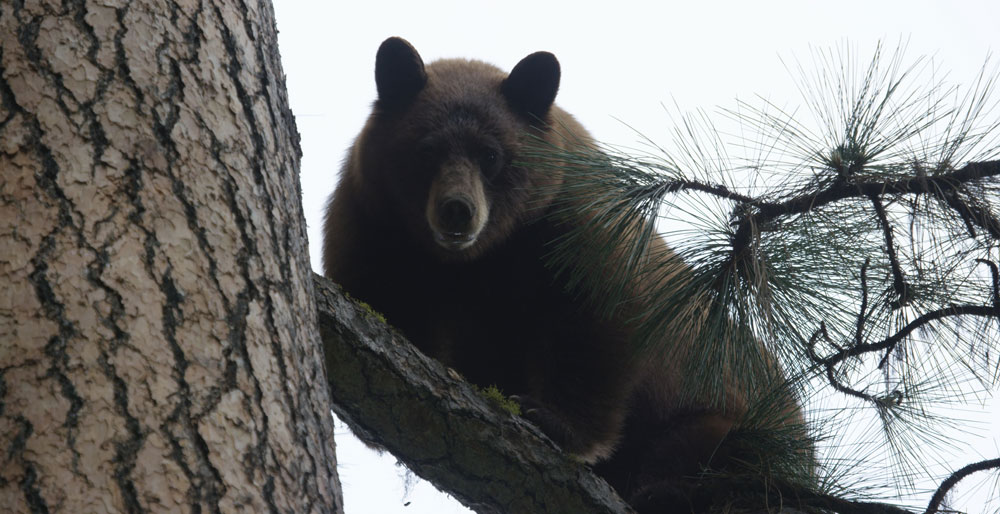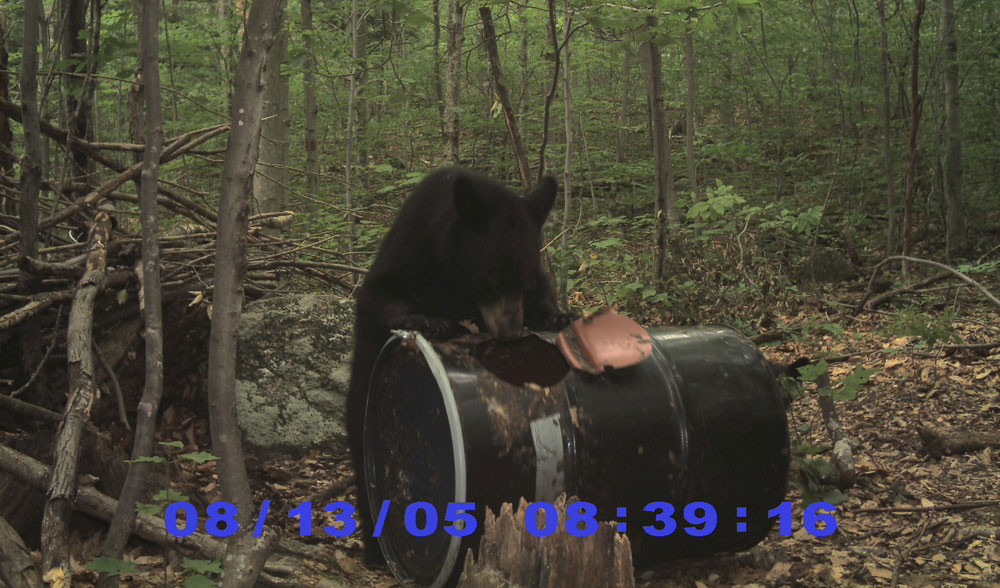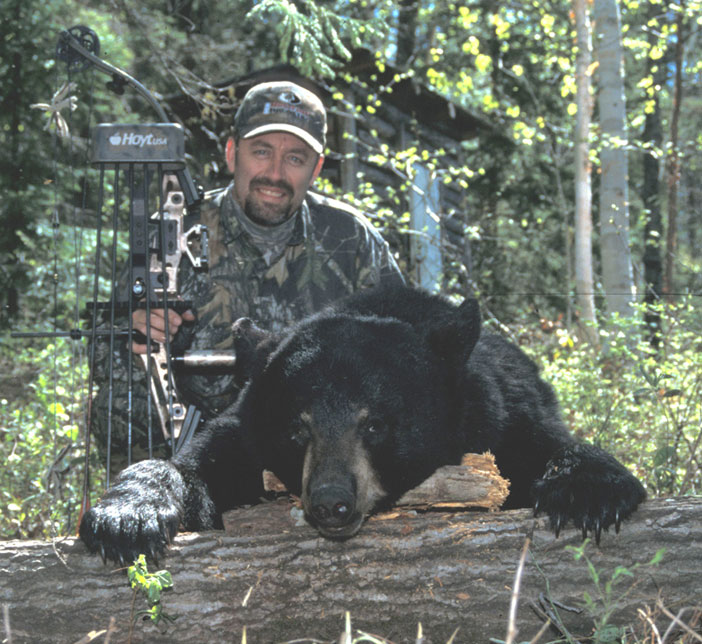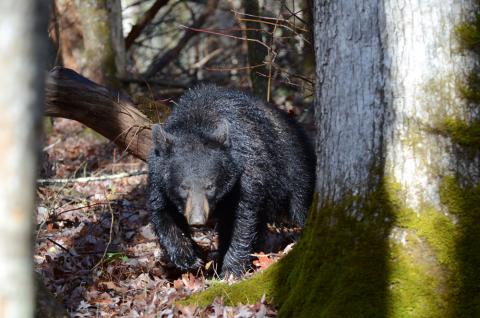Bob Humphrey
There’s a magical time at the end of the day, the final moments of daylight. The sun is already below the trees and the light fades so fast you can almost see the change happening. The wind, which has been slowly abating suddenly dies. The woods become eerily still, so still you could hear a pine needle drop. That makes it all the more incredible when a hulking black form materializes out of the dense underbrush in total silence.
It is Muckwah, the black bear. Your heart races and your body shakes as adrenaline courses through your veins. You fight to regain composure, fearful the bear will hear your pounding heart or heavy breathing and your chance will be gone. You must wait until he looks away to raise your weapon. He looks massive. But is he? Suddenly doubt creeps in. Your guide instructed you to be patient, to size up the bear before committing to a shot. But in the excitement, you’ve forgotten all he told you, and now doubt turns to panic.

Ask any experienced hunter and they’ll tell you that black bears are among the most difficult big game animals to field judge. Part of that is because they’re far less common than deer, so hunters just don’t get much experience seeing them. And part is just the nature of the beast. Any large, black carnivorous animal will look big, especially if you don’t have something for scale nearby.
Fortunately, there are some fairly reliable tips for field judging bears. They involve both physical and behavioral characteristics, and the latter applies to both the bear and you.
Be patient.
I put this first for a reason, as it should always be foremost in your mind. Don’t rush. The first bear you see coming to your bait site will look huge. But often several different bears will visit the same bait station and the progression typically goes from smaller to larger. Take the time to look over a few bears and compare. Also give them time to settle in and wait for an ideal shot.
Judging size is challenging but determining sex is even more daunting, and you want to be real careful about shooting sows. Shooting a sow with cubs is bad form, and in some places, it’s illegal. Often, but not always, the cubs will come to a bait site first. But you don’t want to make a mistake. So be patient.
Set up a scale.

Black bears look deceptively large, even to experienced hunters. Place something at the bait you can use for scale. It could be a marked stake, or merely a bait barrel, as long as you know the dimensions. A bear standing next to a 55 gallon drum that’s lying on its side might look huge, but remember, that drum only stands about 22 inches high. You’re looking for a bear whose shoulder height matches that of an upright barrel, about 33 inches.
Look for the following characteristics:
Head - A bear’s ears stop growing after the first year but their head continues to grow. A young bear’s head will appear more streamlined and pointed. Ears to nose form a skinny triangle and the ears look larger and closer together. Think Mickey Mouse ears. A bigger, older bear’s head will be large and rounded (like a basketball). The ears look smaller in comparison and will be out to the sides more. Ears to nose form an equilateral triangle and there is often a groove down the middle of the forehead.

Body - Young bears generally look lanky because their legs are long for their body size. However, a young spring bear may look larger because of its dense fur, so be careful. And don’t forget about the ears. Older bears have thick, stocky legs that may appear short for their large body. Also, their belly hangs closer to ground. They may also appear slightly bow-legged when approaching head on.
Behavior - Young bears tend to be either reckless or nervous around a bait site, pausing often to look, listen and smell. Older bears tend to be more confident and deliberate in their movements. You can’t appreciate a bear’s ability to approach a bait silently until you witness it. Often, the only time you actually hear a bear approaching is if it’s a sow with cubs, or a dominant boar warning other bears of his approach.
Sex - Telling a bear’s sex is daunting but not impossible. Females and males share many of the same differences as young and old bears. Females tend to be smaller in general with larger hind quarters and smaller shoulders. They generally appear “shorter” from head to toe and their nose shows a slight taper from base to tip. Males will have larger shoulders and slightly smaller hind quarters. They may appear taller and/or longer in the body and their snout is more rectangular and blocky at the tip.
Note: Bob Humphrey has hunted bears from Maine to Alaska and guided bear hunts as a registered Maine guide.






























